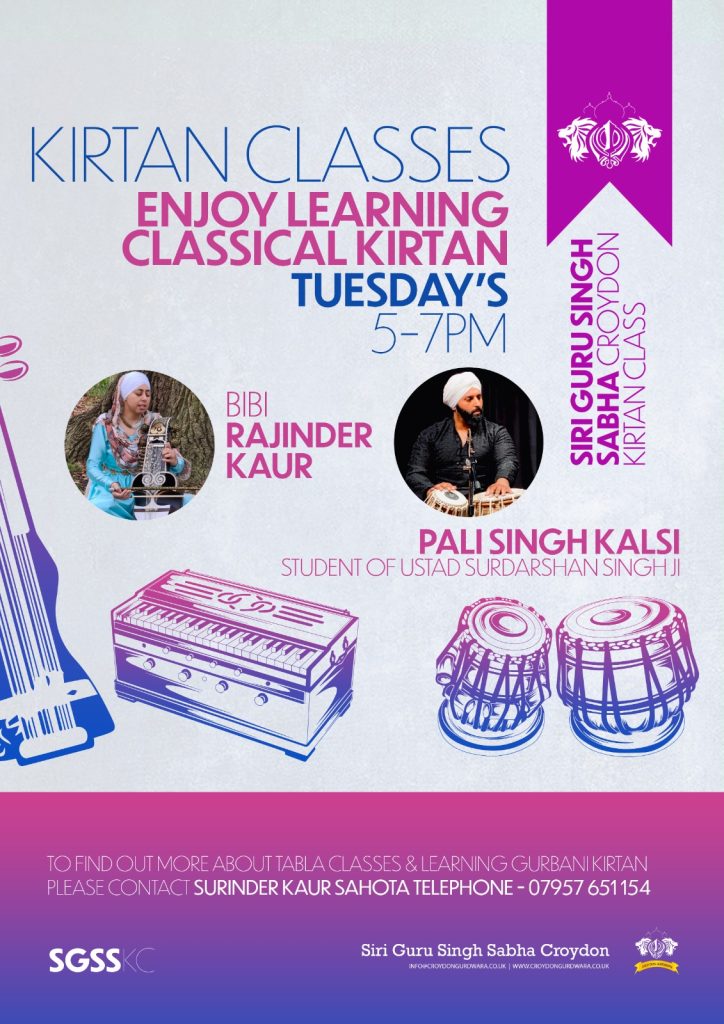Siri Guru Singh Sabha Croydon
176 St James Road, Croydon, Surrey CR0 2BU
Telephone No 020 8688 8155 Registered Charity Number 1203036
176 St James Road, Croydon, Surrey CR0 2BU
Telephone No 020 8688 8155 Registered Charity Number 1203036
Visit Our Channel
Rules for Anand Karaj Bookings:
According Sikh Rehit Maryada Anand Sanskar should follow these rules
Article XVIII-Anand Sanskar (Lit. Joyful Ceremonial: Sikh Matrimonial Conventions and Ceremony)
(a) A Sikh man and woman should enter wedlock without giving thought to the prospective spouse’s caste and descent.
(b) A Sikh’s daughter must be married to a Sikh.
(c) A Sikh’s marriage should be solemnized by Anand marriage rites.
(d) Child marriage is taboo for Sikhs.
(e) When a girl becomes marriageable, physically, emotionally and by virtue of maturity of character, a suitable Sikh match should be found and she be married to him by Anand marriage rites.
(f) Marriage may not be preceded by engagement ceremony. But if an engagement ceremony is sought to be held, a congregational gathering should be held and, after offering the Ardas before the Guru Granth Sahib, a kirpan, a steel bangle and some sweets may be tendered to the boy.
(g) Consulting horoscopes for determining which day or date is auspicious or otherwise for fixing the day of the marriage is a sacrilege. Any day that the parties find suitable by mutual consultation should be fixed.
(h) Putting on floral or gilded face ornamentation, decorative headgear or red thread bands round the wrist, worshipping of ancestors, dripping feet in mild mixed with water, cutting a berry or jandi (Prosopis spicigera) bushes, filling pitcher, ceremony of retirement in feigned displeasure, reciting couplets, performing havans [sacrificial fire], installing vedi (a wooden canopy or pavilion under which Hindu marriages are performed), prostitutes dances, drinking liquor, are all sacrileges.
(i) The marriage party should be as small a number of people as the girl’s people desire. The two sides should greet each other singing sacred hymns and finally by the Sikh greeting of Waheguru ji ka Khalsa, Waheguru ji ki Fateh.
(j) For marriage, there should be a congregational gathering in the holy presence of Guru Granth Sahib. There should be hymn-singing by ragis or by the whole
congregation. Then the girl and boy should be made to sit facing the Guru Granth Sahib. The girl should sit on the left side of the boy. After soliciting the congregation’s permission, the master of the marriage ceremony (who may be a man or woman) should bid the boy and girl and their parents or guardians to stand and should offer the Ardas for the commencement of the Anand marriage ceremony.
The officiant should then appraise the boy and girl of the duties and obligations of conjugal life according to the Gurus tenets. He should initially give to the two an exposition of their common mutual obligations. He should tell them how to model the husband-wife relationship on the love between the individual soul and the Supreme Soul in the light of the contents of circumambulation (lavan) hymns in the Suhi measure (rag) section of the Guru Granth Sahib.
He should explain to them the notion of the state of “a single soul in two bodies” to be achieved through love and make them see how they may attain union with the Immortal Being discharging duties and obligations of the householders life. Both of them, they should be told, have to make their conjugal union a means to the fulfillment of the purpose of the journey of human existence; both have to lead clean and Guru-oriented lives through the instrumentality of their union.
He should then explain to the boy and girl individually their respective conjugal duties as husband and wife. The bridegroom should be told that the girl’s people having chosen him as the fittest match from among a whole lot, he should regard his wife as his better half, accord to her unflinching love and share with her all that he has. In all situations, he should protect her person and honour, he should be completely loyal to her and he should show as much respect and consideration for her parents and relations as for his own. The girl should be told that she has been joined in matrimony to her man in the hallowed presence of the Guru Granth Sahib and the congregation. She should ever harbour for him deferential solicitude, regard him the lord and master of her love and trust; she should remain firm in her loyalty to him and serve him in joy and sorrow and in every clime (native or foreign) and should show the same regard and consideration to his parents and relatives as she would, to her own parents and relatives.
The boy and girl should bow before the Guru Granth Sahib to betoken their acceptance of these instructions. Thereafter, the girl’s father or the principal relation should make the girl grasp one end of the sash which the boy is wearing over his shoulders and the person in attendance of the Guru Granth Sahib should recite the matrimonial circumambulation stanzas (lavan of the fourth Guru in the Suhi musical measure section of the Guru Granth). After the conclusion of the recitation of each of the stanzas, the boy, followed by the girl holding the end of the sash, should go round the Guru Granth Sahib while the ragis or the congregation sing out the recited stanza.
The boy and girl, after every circumambulation, should bow before the Guru Granth Sahib in genuflexion, lowering their forehead to touch the ground and then stand up to listen to the recitation of the next stanza. There being four matrimonial circumambulation stanzas in the concerned hymn, the proceeding will comprise four circumambulations with the incidental singing of the stanza. After the fourth circumabulation, the boy and girl should, after bowing before the Guru Granth Sahib, sit down at the appointed place and the ragis or the person who has conducted the ceremony should recite the first five and the last stanza of the Anand Sahib. Thereafter, the Ardas should be offered to mark the conclusion of the Anand marriage ceremony and the sacred pudding distributed.
(k) Persons professing faiths other than the Sikh faith cannot be joined in wedlock by the Anand Karaj ceremony.
(l) No Sikh should accept a match for his/her son or daughter for monetary consideration.
(m) If the girl’s parents at any time or on any occasion visit their daughter’s home and a meal is ready there, they should not hesitate to eat there. Abstaining from eating at the girl’s home is a superstition. The Khalsa has been blessed with the boon of victuals and making others eat by the Guru and the Immortal Being. The girl’s and boy’s people should keep accepting each other’s hospitality, because the Guru has joined them in relationship of equality.
(n) If a woman’s husband has died, she may, if she so wishes, finding a match suitable for her, remarry. For a Sikh man whose wife has died, similar ordinance obtains.
(o) The remarriage may be solemnized in the same manner as the Anand marriage.
(p) Generally, no Sikh should marry a second wife if the first wife is alive.
(q) A baptized Sikh ought to get his wife baptized.




